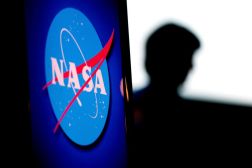
Whatever NASA’s Gryphon X is, it’s just a proposal. For now.
However, Jerry Davis, the CIO at NASA’s Ames Research Center, is pushing for that proposal to become a reality.
Davis outlined his vision for Gryphon X at an Institute for Critical Infrastructure Technology event Monday, elaborating on how the cybersecurity program would shore up the agency’s current infrastructure while constructing new security measures for emerging technology.
The impetus for the project came as work at the research center not only focuses on new networks being used in aeronautics and autonomous vehicle research, but protecting the large industrial control systems that power the wind tunnels and substations used to test thermodynamics and hypersonics.
“There is an opportunity where we can work with all of these issues, and then work on vulnerabilities in both existing and emerging infrastructure,” Davis said.
The program is designed to give NASA a way to bring research and development inside the government, aiming to create simulated environments to test new tech and a training ground for the agency’s cybersecurity teams.
“We don’t have a monopoly on intellect,” Davis said. “We do have smart people, but we don’t have the people that can help us with defining solutions to cyber issues.”
The program, at least at first, would lean on Space Act agreements, which allow private companies or academia to work with NASA outside of traditional contract means. Davis said companies like Nissan and Google are already working with NASA on autonomous vehicles via Space Act agreements.
“Maybe a company has an expertise you are going to lend to me and I have a facility that I am going to lend to you,” Davis explained to FedScoop after his talk. “It’s about benefit. What is the benefit that NASA is going to get out of it and what is the benefit that ‘Company x’ is going to get out of it by having the partnership? If they are valid, legitimate partnerships and you sign this agreement — a lot of the times there is no money exchanged.”
Davis told FedScoop that if Gryphon X becomes a reality, he sees the program also using cooperative research and development agreements as well as traditional contract vehicles.
For now, Davis has been working to get the project in front of NASA leadership. He told FedScoop that leaders who have been briefed on Gryphon X “recognize there’s a need for something like this,” but there is still the process of getting people up to speed on his vision.
“NASA’s not a cyber entity,” Davis said. “We do space exploration and earth science. [Gryphon X] is something new and so it takes a little while for people to ingest and understand it.”
Contact the reporter on this story via email at greg.otto@fedscoop.com, or follow him on Twitter at @gregotto. His OTR and PGP info can be found here. Subscribe to the Daily Scoop for stories like this in your inbox every morning by signing up here: fdscp.com/sign-me-on.






